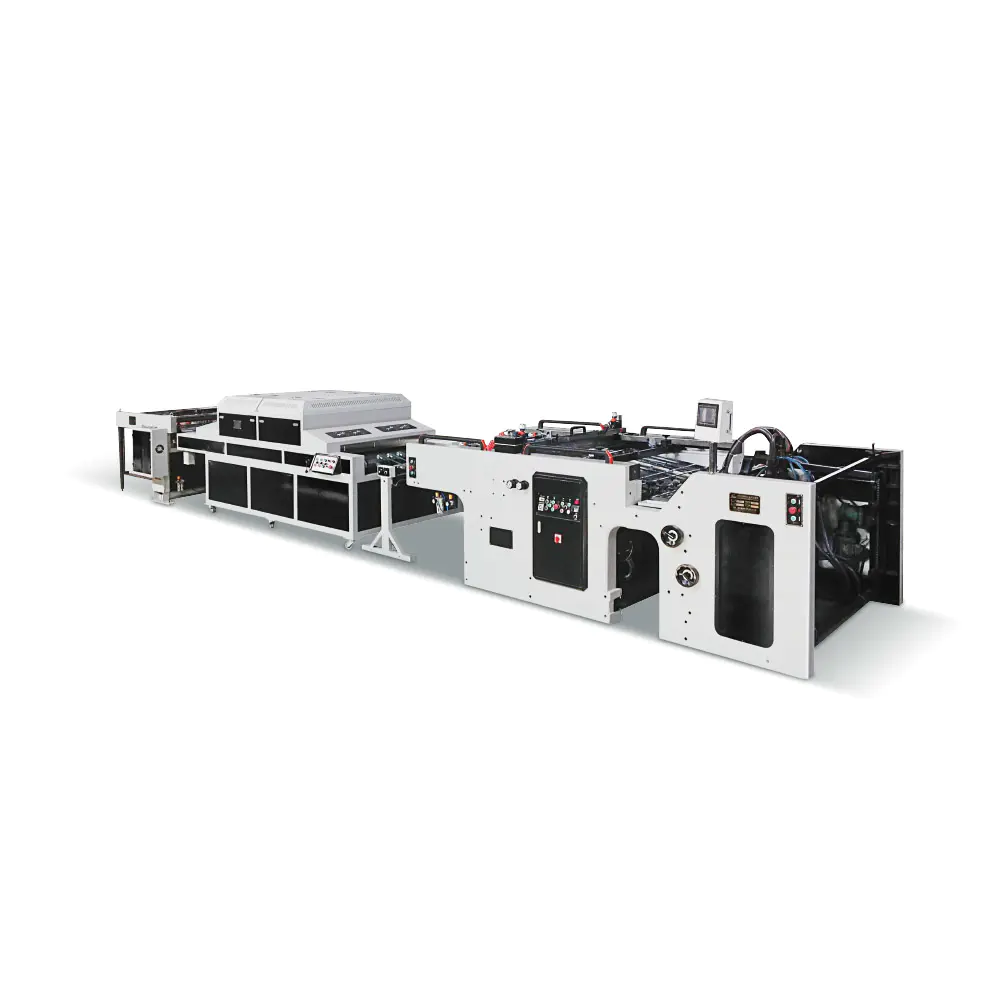- Home
- About Us
- Products
- Automatic Paper Embossing Machine
- Die Cutting Embossing Machine
- Foil Stamping Embossing Machine
- Screen Printing Machine
- Cardboard Laminating Machine
- Positioning Sheet Cutting Machine
- Hologram Laser Embossing Machine
- Screen Complete Printing Equipment
- H1000/H1500 Frame Making Machine
- 1100PM Plate Baking Machine
- EX1215/EX1518 Screen Exposure Machine
- MX1214/MX1518 Manual Screen Stretching Machine
- SFL-3F Compressed Air Dryer Machine
- EX1150 Vacuum Exposure Machine
- G1200 Manual Squeegee Grinding Machine
- E1300 Laser Engraving & Etching Machine
- UV3500R UV Dryer Machine
- Printing Material
- News Center
- Faq
- Contact Us
Web Menu
- Home
- About Us
- Products
- Automatic Paper Embossing Machine
- Die Cutting Embossing Machine
- Foil Stamping Embossing Machine
- Screen Printing Machine
- Cardboard Laminating Machine
- Positioning Sheet Cutting Machine
- Hologram Laser Embossing Machine
- Screen Complete Printing Equipment
- H1000/H1500 Frame Making Machine
- 1100PM Plate Baking Machine
- EX1215/EX1518 Screen Exposure Machine
- MX1214/MX1518 Manual Screen Stretching Machine
- SFL-3F Compressed Air Dryer Machine
- EX1150 Vacuum Exposure Machine
- G1200 Manual Squeegee Grinding Machine
- E1300 Laser Engraving & Etching Machine
- UV3500R UV Dryer Machine
- Printing Material
- News Center
- Faq
- Contact Us
Product Search
Exit Menu
What factors affect the accuracy and resolution of a screen printing machine?
Screen printing is a versatile and widely used printing technique known for its ability to reproduce detailed designs on various substrates with high precision and quality. The accuracy and resolution of screen printing depend on several key factors, each playing a crucial role in determining the final output's clarity, sharpness, and consistency. Below, we delve into these factors in detail:
Screen Mesh Count
The mesh count of the screen directly impacts the resolution achievable in screen printing. Mesh count refers to the number of threads per inch or centimeter in the screen fabric. Screens with higher mesh counts have more threads per unit area, resulting in finer detail and smoother gradients. Conversely, lower mesh counts are suitable for thicker ink deposits and larger designs.
Effect on Resolution: Higher mesh counts (e.g., 230 or above) are used for fine detail and photographic prints, providing sharper edges and more intricate details. Lower mesh counts (e.g., 80-160) are ideal for bold designs and specialty inks that require thicker deposits.
Stencil Quality
The stencil acts as a template that allows ink to pass through onto the substrate in specific areas, defining the design's shape and detail. Stencil quality is crucial for achieving sharp edges, accurate registration, and consistent ink deposition.
Stencil Preparation: Stencils are typically made using emulsion-coated screens or direct film positives/negatives. Proper exposure and development of the stencil ensure that fine details are accurately reproduced on the screen.
Sharpness of Edges: A high-quality stencil with well-defined edges ensures that ink is transferred precisely onto the substrate, maintaining the design's integrity and clarity.
Registration System
Registration refers to the alignment of multiple colors or layers in a design. Accurate registration is essential for preventing color shifts or misalignment, especially in multi-color prints.
Types of Registration Systems: Modern screen printing machines use various registration systems, including manual, semi-automatic, and fully automatic systems. Automatic systems often use optical sensors or mechanical registration pins to achieve precise alignment.
Adjustability: Adjustable registration systems allow operators to fine-tune the alignment of each color or layer, ensuring consistent registration across multiple prints.
Squeegee Pressure and Angle
The squeegee is used to push ink through the screen mesh onto the substrate. Proper adjustment of squeegee pressure and angle is critical for controlling ink deposition and achieving uniform prints.
Pressure Control: Adjusting squeegee pressure ensures proper ink penetration through the screen mesh without causing distortion or bleeding of the design.
Angle Adjustment: The angle at which the squeegee contacts the screen affects ink flow and deposit thickness. Optimal angle adjustments prevent ink buildup or insufficient coverage.
Ink Viscosity and Flow
Ink viscosity refers to its thickness or resistance to flow. Consistent ink viscosity and flow rate are essential for achieving uniform ink deposition and sharp print edges.
Viscosity Adjustment: Ink viscosity can be adjusted using additives or thinners to achieve the desired consistency for different substrates and printing conditions.
Flow Characteristics: Proper ink flow ensures smooth ink deposition and prevents clogging or uneven coverage, particularly in fine detail areas of the design.

Substrate Flatness and Surface Preparation
The flatness and surface condition of the substrate affect print registration and ink adhesion. Flat substrates with smooth surfaces provide a stable base for achieving accurate and consistent prints.
Surface Preparation: Proper cleaning and treatment of the substrate surface ensure optimal ink adhesion and prevent contaminants from affecting print quality.
Substrate Compatibility: Different substrates (e.g., paper, textiles, plastics) require specific surface preparations and ink formulations to achieve desired print results.
Curing or Drying Process
After printing, the ink must be cured or dried to ensure durability and color fastness. Proper curing processes contribute to the final print's quality and longevity.
Curing Methods: Screen printing inks can be cured using heat (e.g., conveyor dryers, flash curing units) or UV light (UV curing systems). Each method offers advantages in terms of speed, energy efficiency, and ink compatibility.
Effect on Ink Properties: Curing or drying processes affect ink adhesion, flexibility, and resistance to abrasion or environmental factors. Proper curing ensures that prints maintain their color intensity and durability over time.
of interest
Didn't Find A Product That Suits You?
Contact us for the latest news.
QUICK LINKS
PRODUCT CENTER
Contact Us
-

+86 13738772345
-

13738772345@163.com
-

+86-577-68100881
-

+86-577-68100882
-

No. 11 Haifeng Road, Longgang City, Wenzhou City, Zhejiang Province, China


 中文简体
中文简体 Español
Español












